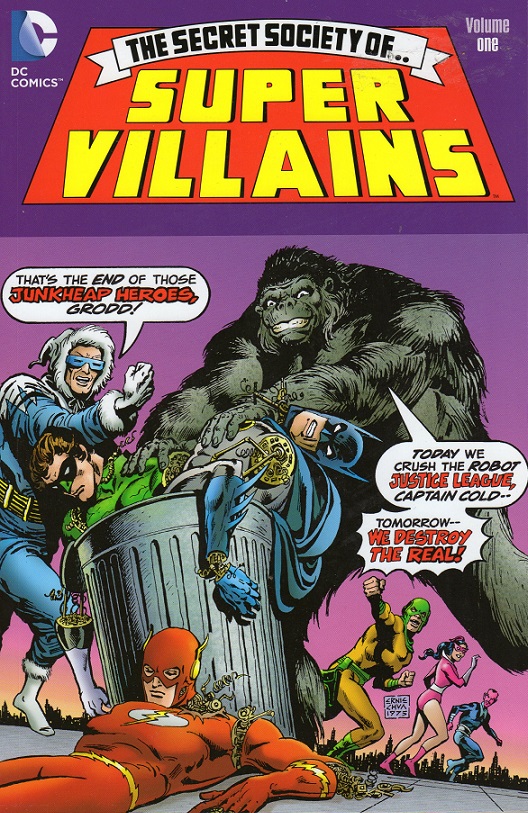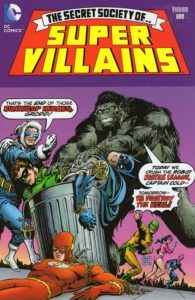Comic Book Review: The Secret Society of Super-Villains Volume One edited by Ian Sattler
DC Comics has produced many fine characters in its superhero books over the decades, including iconic super-villains. It can be a lot of fun watching the bad guys do things when their specific hero isn’t around to stop them. Thus, in 1976, we got the first DC series dedicated to the adventures of a super-villain group.
Several baddies are invited to a “Sinister Citadel” in San Francisco by means ranging from a rock with a note wrapped around it to an intergalactic sub-space message. There they are met by a clone of the Paul Kirk Manhunter (even in the 1970s we had characters with convoluted backstories) who claims to have gone mercenary and now works for their mysterious “benefactor.” The assembled villains are ambushed by a robotic version of the Justice League, and easily smash them, demonstrating the power of numbers. Then Gorilla Grodd and Copperhead are sent on an initiation mission, which goes south and Copperhead is captured by the police. Still, the fun is just beginning!
Since the Comics Code was still in effect at the time, the villains could never be allowed a full victory, and in the second issue we meet Captain Comet, DC’s first mutant superhero, who hadn’t appeared since the 1950s. It was explained he had been out in space, and unaware of current events. The Society decides to dupe him into working with them–it doesn’t actually work because he’s out of touch, not stupid, but since it is revealed at this point that the Society’s secret benefactor is the evil New God Darkseid, who none of the villains particularly want to serve, Captain Comet winds up teaming with the Society anyhow.
Once the Darkseid situation is resolved, the various members of the Society come up with their own evil schemes, and Captain Comet proceeds to be a thorn in their sides. This volume collects the first ten issues, and an alternate version of the first issue with slightly different characters and a significantly different plot.
Company politics resulted in three different writers in ten issues, as well as no steady art team. Series creator Gerry Conway was the most frequent author. This also affected the casting; some editors at DC wouldn’t let iconic villains associated with their heroes be used, so the Society was heavy on Flash foes (because Mr. Conway was also writing the Flash), relatively obscure characters such as Copperhead and the Earth-2 Wizard, and featured a new person in the role of Star Sapphire, replacing Green Lantern Hal Jordan’s long-time love interest Carol Ferris.
Lex Luthor does show up for one issue, but it’s a very poor showing for him, winding up arrested by ordinary police officers. Longer lasting was Funky Flashman, a non-powered grifter and entrepreneur who is believed to be Jack Kirby’s satire on Stan Lee’s less stellar qualities. (His appearance is changed in this series to more closely resemble how Stan Lee looked in the Seventies.)
Sales were never particularly good on this title, and it would get cancelled in the DC Implosion, but it’s a fun look at the bad guys as they were at the time. (The alternate first issue plays up Captain Cold’s would-be ladies’ man trait, which was his main characterization point at the time.) Recommended to DC Comics fans and fans of the Flash TV series.


